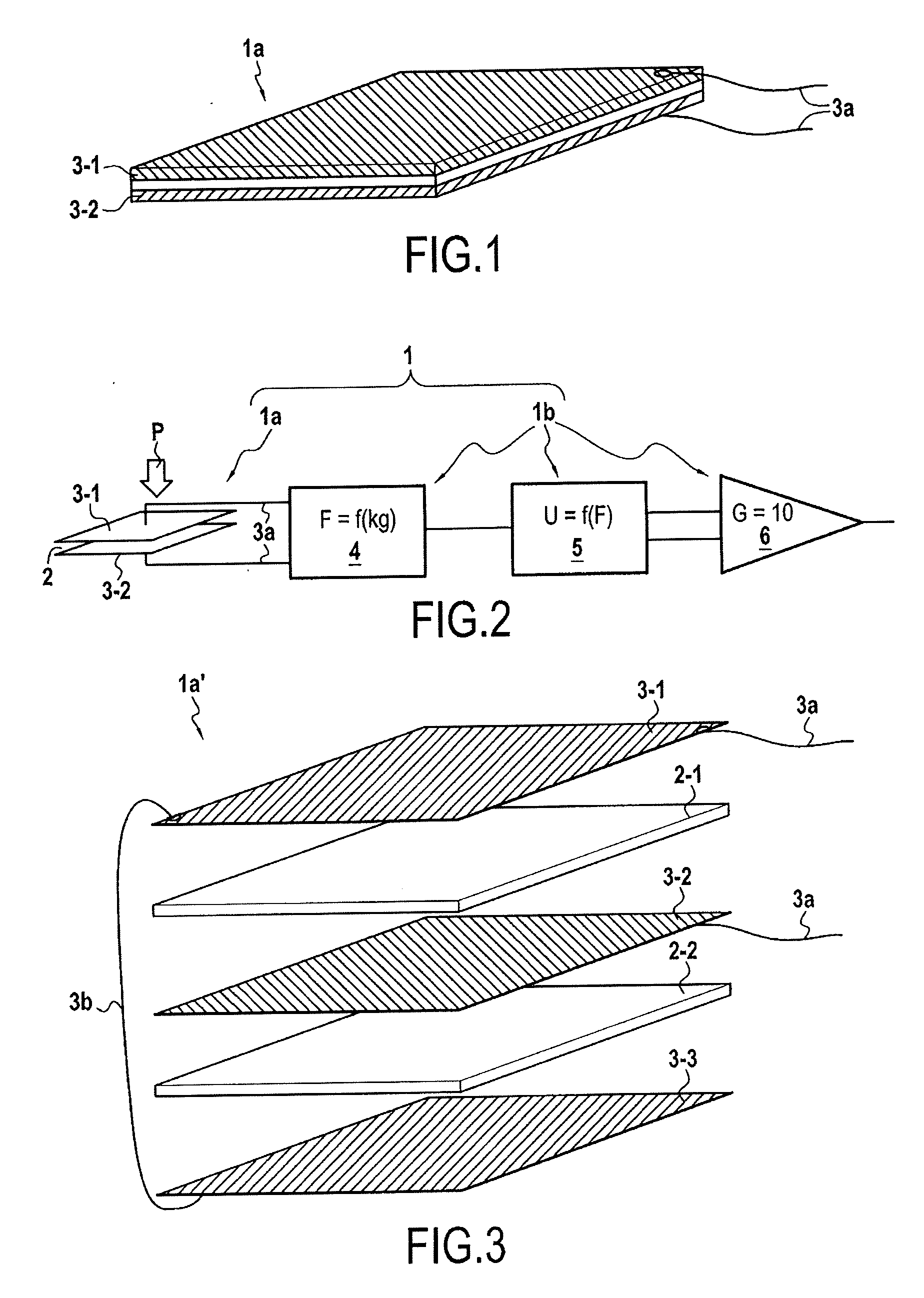Pressure sensor comprising a capacitive cell and support device comprising said sensor
a capacitive cell and pressure sensor technology, applied in the direction of seating furniture, medical transportation, etc., can solve the problems of high manufacturing cost, affecting the cost of the support device itself, and it is difficult to ensure adequate coverage of the safety rails installed on the frame of the support device, etc., to achieve low manufacturing cost, low manufacturing cost, and high sensitivity.
- Summary
- Abstract
- Description
- Claims
- Application Information
AI Technical Summary
Benefits of technology
Problems solved by technology
Method used
Image
Examples
Embodiment Construction
[0081]FIG. 1 illustrates a flat condenser 1a of the capacitive sensor of the present disclosure designed for regulating the pressure of the air inside a mattress 11 composed of air-inflated cells 12 such as those shown in FIGS. 5A and 5B by measuring the load pressure exerted by the patient's body on the sensor and by actuating means for inflating and means for deflating the cells 12 so that the interface pressure exerted by the mattress on the person's body is reduced and the ideal load bearing of the person is achieved.
[0082]In a known manner, a single pressure sensor 1 placed under the patient in his sacral region enables the ideal inflation pressure of the air in the cells of the mattress to be determined, as summarized hereafter.
[0083]The interface pressure exerted by the mattress on the body is directly dependent on the pressure of the air in the air-filled cells. To achieve an ideal load bearing, in other words, the lowest possible interface pressures, it is preferable to inc...
PUM
 Login to View More
Login to View More Abstract
Description
Claims
Application Information
 Login to View More
Login to View More - R&D
- Intellectual Property
- Life Sciences
- Materials
- Tech Scout
- Unparalleled Data Quality
- Higher Quality Content
- 60% Fewer Hallucinations
Browse by: Latest US Patents, China's latest patents, Technical Efficacy Thesaurus, Application Domain, Technology Topic, Popular Technical Reports.
© 2025 PatSnap. All rights reserved.Legal|Privacy policy|Modern Slavery Act Transparency Statement|Sitemap|About US| Contact US: help@patsnap.com



